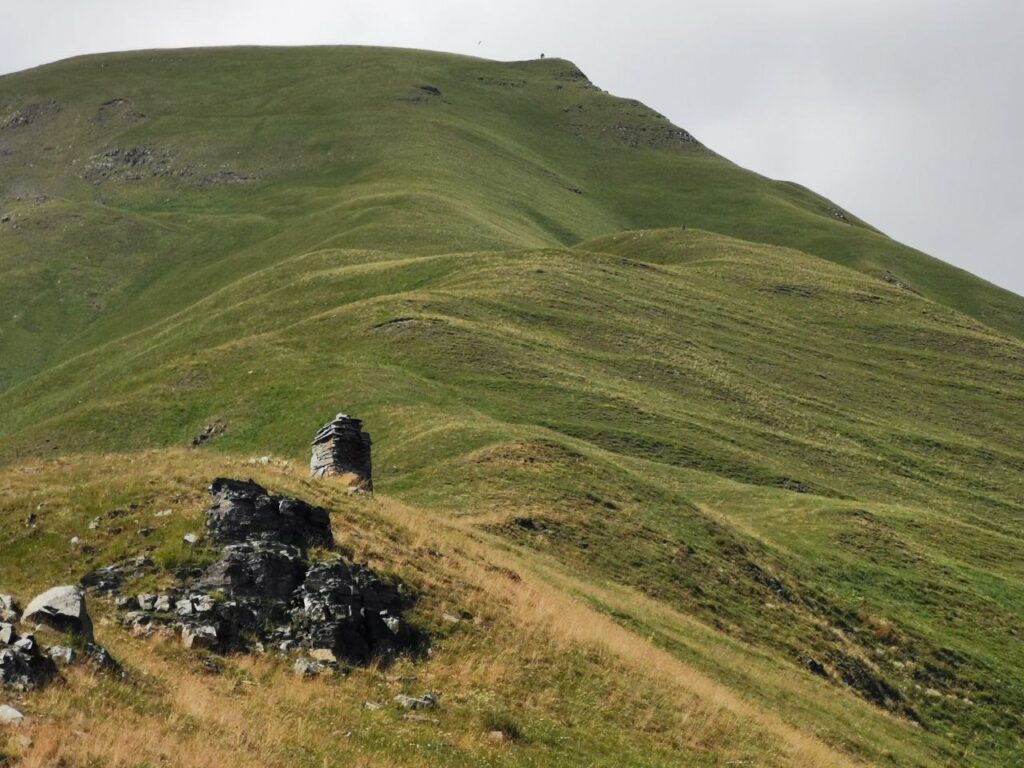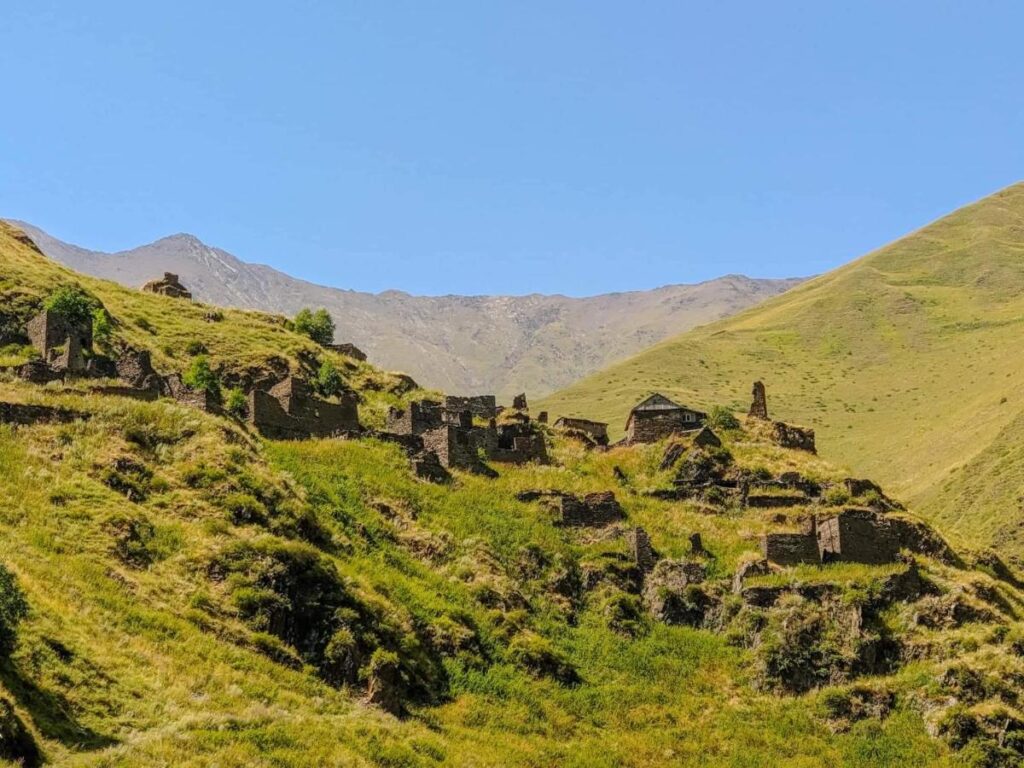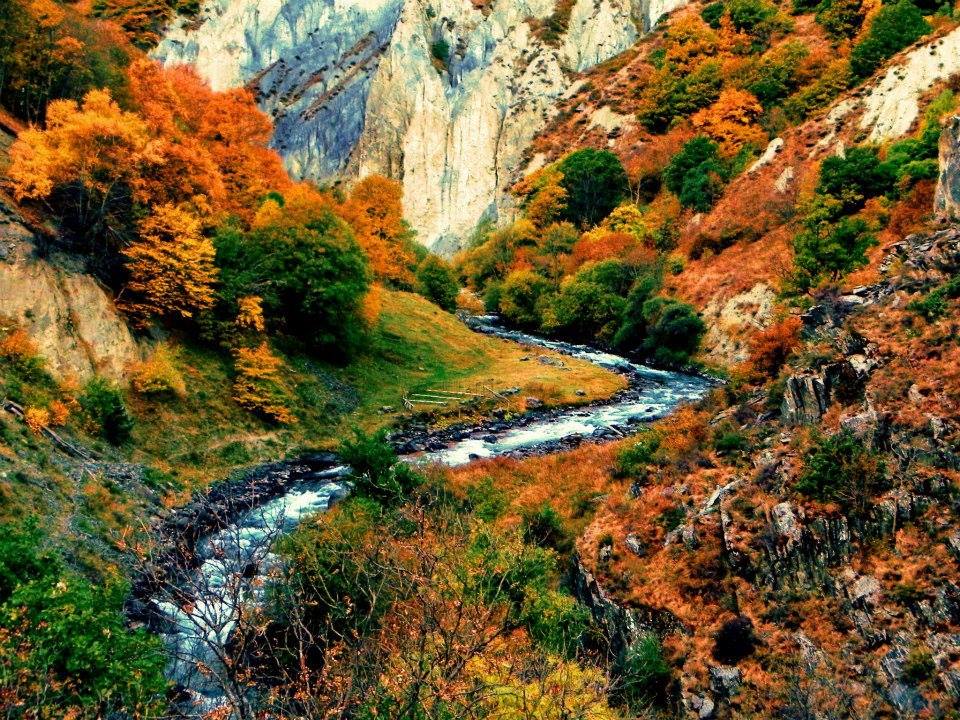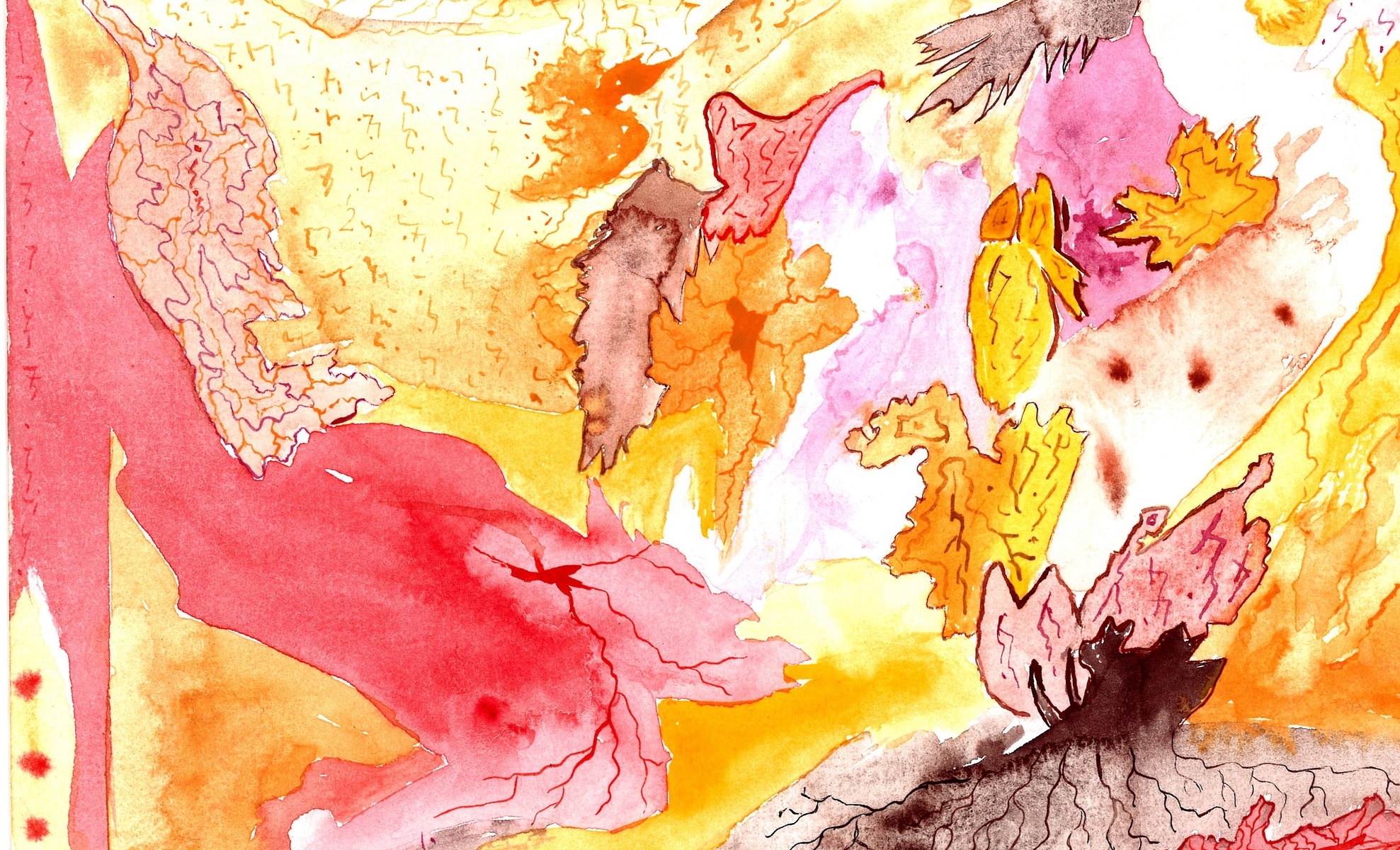
The pagan shrines hold a special place in the Georgian culture. In the mountain region Khevsureti they are not only know as the abodes of the pre-Christian Georgian deities, but are also mentioned as deities themselves. The shrines are animated beings, that change form, fly and relocate their place.
The Flying Shrines
In the legacy texts called “Andrezi”/ “ანდრეზები” we read about flying shrines. The shrines do decide at times to relocate. Their relocation can take place from a valley to the top of the mountain and then back to the valley again.1 In other times they wish to change place and settle somewhere else completely. If there is already a village, this shrine will become the new patron, or co-patron, of the village. It also occurred that the shrines duplicated. Meaning that they stay in their form as shrines at the old place and simultaneously move to a different one. During their move the shrines change form and are visible to the human eye as flying bulbs of light, white doves or cross-like figures. But not everyone can perceive them.

The Mkadres – Human Accomplices of the Flying Shrines
“Mkadres”/ “მკადრე” were called the people who would initially get contacted by the shrines/ deities. They were chosen to help the deities settle as shrines and assisted them through their relocation.2 Similarly to the “Qadagis” the “Mkadres” were chosen by the gods themselves, due to their sensitive and perceptive nature to subtler forms of life. “Mkadres” were simple people, with no obvious special treats other than perhaps having represented the minorities – the more fringe side of society.
One important attribute that they often get described with in the legacy texts is the “Samkadreo”/ “სამკადრეო”. The “Samkadreo” is a special cloth that Mkadres tie around their arm. It serves as a roost for the flying shrine. This special accessor is a resting place and invites the materialised divinity on the their arm.3 Unlike the “Qadagi” the “Mkadres” are in constant relationship with the deity. They relate with their physically manifested form on a daily basis and dedicate their life to the completion of the settling quest. The “Mkadres” are led by the deity and follow them to the shrine’s designated place. Once the right location of the deity’s (new) abode is found their role as “Mkadre” ends.
We find a good illustration of this close relationship between the “Mkadre” and the flying shrine in the legacy text of “the creation story of the Ardoti shrine”.4

Creation Story of the Ardoti Shrine
They say, that the shrine flew from Armenia to this area in Mighmakhevi, a limping man was accompanying it. The shrine is flying in the form of a dove and this limping Mkadre is following the dove. When he gets tired or falls asleep the dove waits for him. When the Mkadre wakes up the dove continues to fly and leads the way, the Mkadre follows.

Finally they arrived in Ardoti and the dove vanished in front of the limping Mkadre’s eyes. The people of Ardoti saw this man and asked who he was, but he didn’t speak Georgian and couldn’t answer. He was pointing though, to the place where the dove vanished and fell in tears. The people brought him food but he didn’t touch anything. Finally he went to the Somkho hill, where the dove vanished and sat there for three days and three nights. The Ardotian people could tell that there was happening something of importance and they brought a goat for sacrifice. The person who killed the goat became a Qadagi at once. The shrine started to talk through the Qadagi. Lastly the Mkadre started to talk as well in Georgian and he told the story to the people – This shrine is called Giorgi. Whole Armenia is following this one and He is a great care taker and protector of the people. At one festivity the people angered him. They didn’t make the ritual for His behalf in time, so He got upset and flew away. I followed Him. At the end He decided to rest here. He isn’t going back, He is staying here for good. But I will go back and return with a broken heart. – The man fell in tears. The Ardotians soothed him. – What can you do, it was the wish of the “Children of the Gods”. If we fail Him as well, He will leave us too. – After this the limping Mkadre left. The shrine of the Holy Giorgi staid in Ardoti. The shrine made one man as his tongue (“Qadagi”) in no time and the Qadagi said everything that was needed to be offered for this newly established shrine. The venerators of the holy Giorgi shrine would perceive Him clothed in white Kistian traditional garb. They would say: I saw yesterday the holy Giorgi clothed in Kistian dress and He advised me this and that. I saw yesterday Giorgi and he was mad and scolded me. [Kiknadze, Andrezi, pg 128.]
Sources:
- Kiknadze Zurab, Georgian Mythology 1, Cross and its Community, Tbilisi 2016, pg. 47.
- ibid., pg. 54.
- Ochiauri Tina, Ancient Georgian Religions, Tbilisi 1954, pg. 98.
- Kiknadze Zurab, Andrezi, The Religious-Mythological Oral Traditions of the Highland of Eastern Georgia, Tbilisi 2009, pg. 128.
